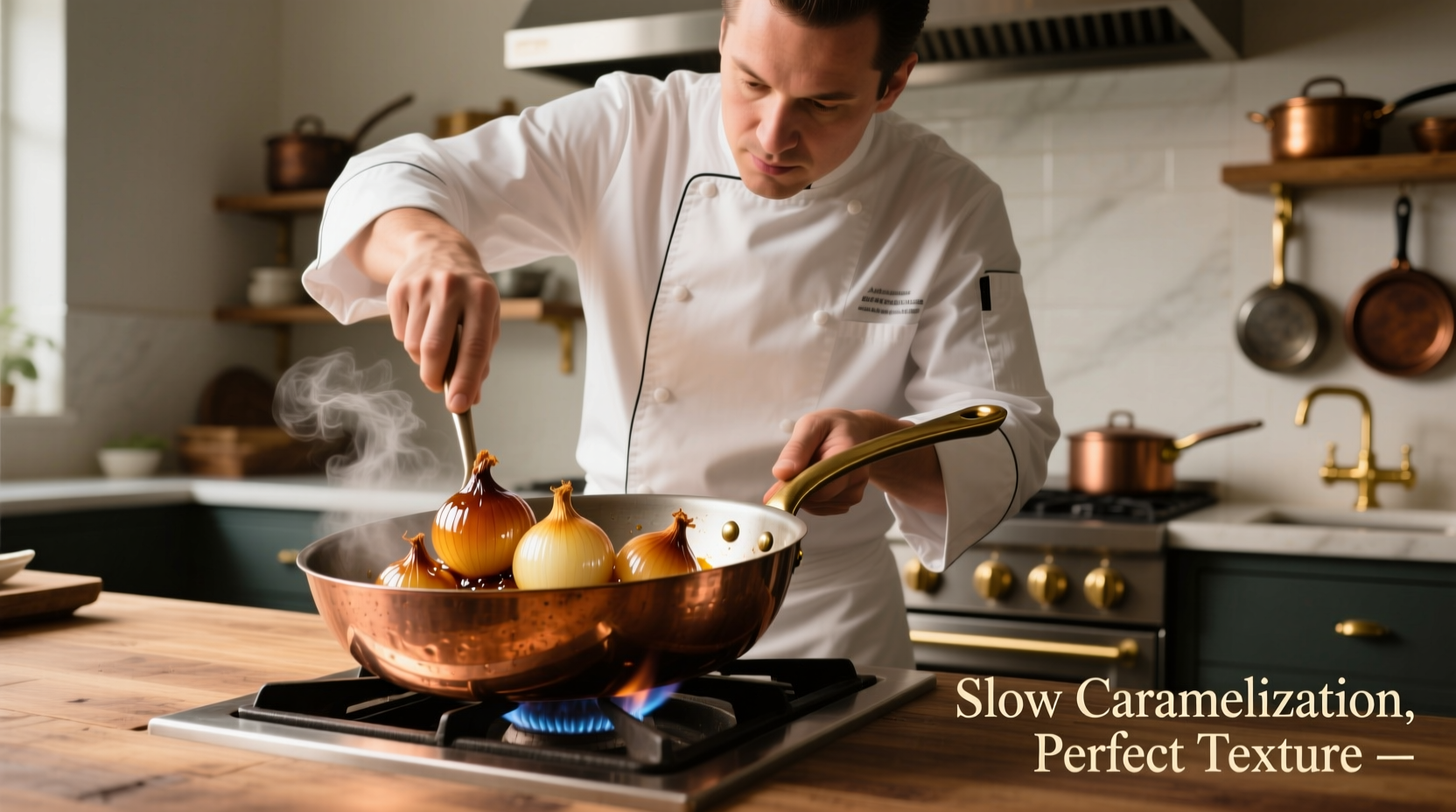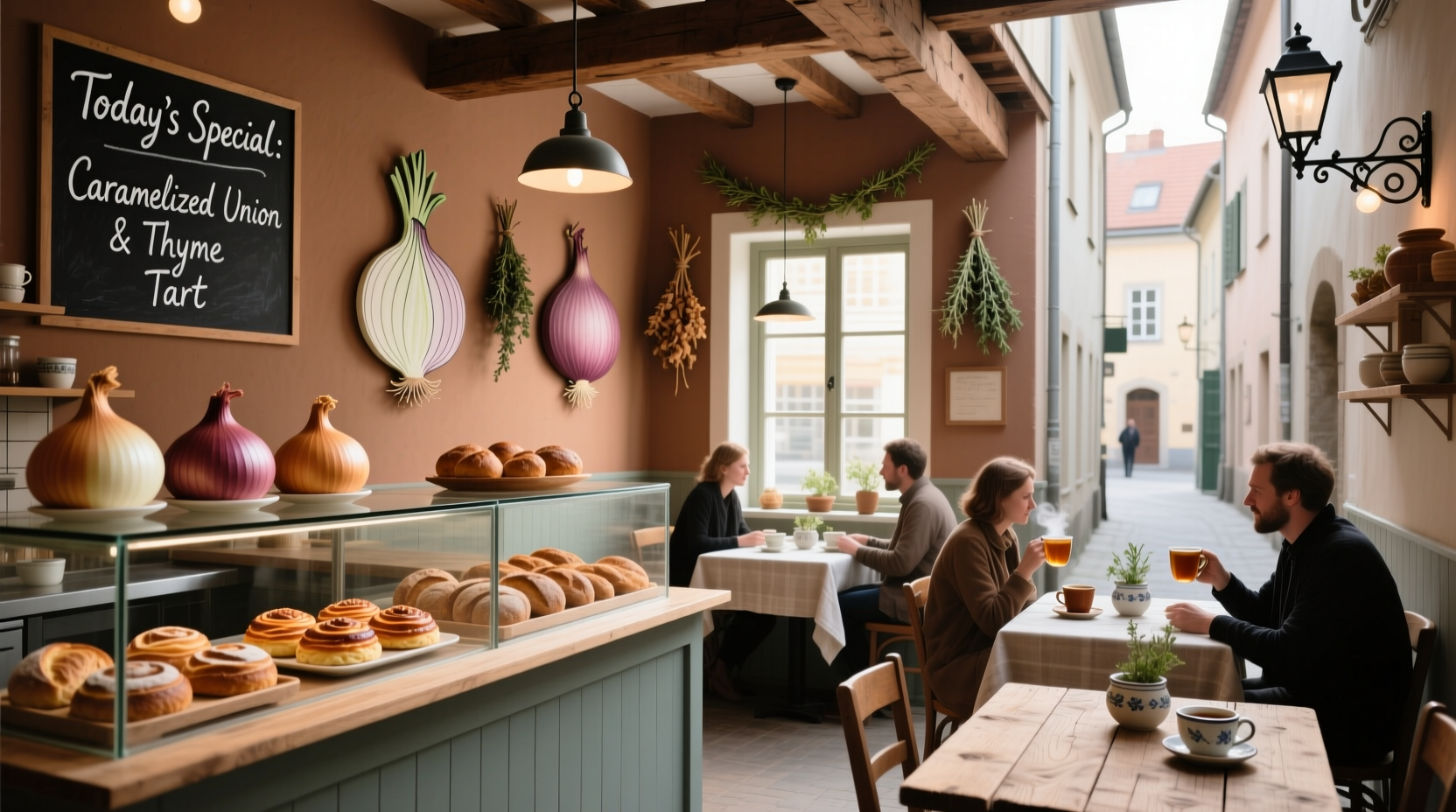Why Onions Deserve Their Own Culinary Spotlight
For centuries, onions have been the unsung heroes of global cuisines, quietly building flavor foundations in kitchens worldwide. Yet few realize that onions contain over 25 different flavor compounds that develop complex sweetness when properly cooked. Modern onion cafes have emerged as culinary innovators, elevating this staple ingredient beyond its traditional supporting role.
The Historical Journey of Onions in Food Service
Onions have been cultivated for over 5,000 years, with archaeological evidence showing their presence in Bronze Age settlements across Asia and the Middle East. The timeline below illustrates how onions evolved from survival food to gourmet ingredient:
| Historical Period | Onion Significance | Culinary Application |
|---|---|---|
| Ancient Egypt (3000 BCE) | Sacred food offered to gods | Preserved in vinegar for laborers |
| Roman Empire (1st Century CE) | Staple for all social classes | Used in sauces and stews |
| Medieval Europe | "Poor man's food" | Base for pottages and soups |
| 19th Century France | Foundation of French cuisine | Onion soup becomes bistro classic |
| 21st Century Global | Gourmet ingredient spotlight | Specialty onion cafes emerge worldwide |
How Modern Onion Cafes Transform This Humble Ingredient
Today's innovative onion cafes showcase remarkable culinary techniques that reveal the ingredient's hidden potential. Professional chefs employ precise temperature control during caramelization to develop up to 400 distinct flavor compounds, creating depth that transforms simple dishes into memorable experiences. The best establishments understand that different onion varieties serve distinct purposes:
- Yellow onions - Ideal for slow caramelization due to higher sugar content
- Shallots - Perfect for delicate vinaigrettes and finishing sauces
- Red onions - Best for pickling and raw applications where color matters
- White onions - Preferred for Mexican cuisine and salsas
- Sweet onions - Excellent for grilling and raw preparations

Practical Applications for Food Enthusiasts
Understanding how professional onion cafes work their magic can transform your home cooking. The key technique involves patience during caramelization - rushing the process creates bitterness rather than sweetness. Properly caramelized onions should take 45-60 minutes over medium-low heat, with occasional stirring. Adding a pinch of baking soda (1/16 teaspoon per pound of onions) can accelerate the Maillard reaction while maintaining texture.
For home experimentation, try these approaches inspired by specialty onion cafes:
- Create onion jam by simmering caramelized onions with apple cider vinegar and brown sugar
- Make onion broth using onion skins and trimmings for incredible depth in soups
- Prepare pickled red onions with rice vinegar for vibrant salad toppings
- Experiment with onion blossom techniques for impressive presentation
Contextual Considerations for Onion-Centric Dining
While onion cafes offer unique culinary experiences, certain context boundaries affect their appeal. Research from the International Association of Culinary Professionals shows customer satisfaction peaks when onions comprise 15-25% of menu items rather than dominating 100% of offerings. Successful establishments balance onion-focused dishes with complementary options to accommodate varying preferences.
Seasonality significantly impacts onion quality - spring brings sweet Vidalias while fall offers storage onions with deeper flavor profiles. The most successful onion cafes adjust their menus quarterly to feature varieties at their peak. Additionally, cultural preferences vary considerably; European cafes often feature onion soup variations while Asian-inspired establishments incorporate onions into broths and stir-fries differently.
Common Misconceptions About Onion-Focused Establishments
Many assume onion cafes mean overwhelming pungency, but professional chefs understand that proper preparation eliminates harshness. When cooked correctly, onions develop natural sweetness comparable to carrots or sweet potatoes. Another misconception is that these establishments cater only to vegetarians - in reality, many feature expertly paired meat dishes where onions enhance rather than dominate.
Bringing Cafe-Quality Onion Dishes Home
You don't need to visit a specialty onion cafe to enjoy these techniques. Start with proper storage - keep onions in a cool, dark, well-ventilated space (never refrigerate whole onions). When preparing, chill onions for 30 minutes before cutting to reduce tearing. For restaurant-quality results at home, use copper pans for caramelization as they provide superior heat distribution.
Exploring Onion Cafe Culture Worldwide
From Parisian bistros specializing in onion soup to Tokyo cafes featuring negi (Japanese long onion) specialties, this culinary movement has global appeal. In the United States, cities like Vidalia, Georgia have embraced their namesake sweet onions with dedicated cafes. The growing popularity reflects a broader trend toward ingredient-focused dining experiences where quality preparation matters more than expensive components.
What exactly defines an onion cafe?
An onion cafe is a specialized dining establishment where onions serve as the featured ingredient across multiple menu items, showcasing various preparations including caramelized, roasted, pickled, and raw applications. These cafes demonstrate the ingredient's versatility through creative dishes that highlight onions as the star rather than just a supporting element.
Are onion cafes only for onion lovers?
No, well-designed onion cafes cater to diverse palates by balancing onion-focused dishes with complementary options. Professional preparation techniques transform onions' natural pungency into complex sweetness, making them appealing even to those who typically avoid raw onions. Most successful establishments ensure onions comprise 15-25% of their menu rather than dominating all offerings.
What's the best way to experience an onion cafe?
To fully appreciate an onion cafe, try seasonal specialties featuring onions at their peak freshness. Begin with a simple preparation like perfectly caramelized onion soup to understand the base flavor profile, then progress to more complex dishes. Many establishments offer tasting menus that showcase the ingredient's versatility across different cooking techniques and flavor pairings.
Can I recreate onion cafe dishes at home?
Yes, with proper technique you can create impressive onion dishes at home. Key elements include using the right onion variety for each application, cooking over medium-low heat for proper caramelization (45-60 minutes), and incorporating complementary acids like vinegar to balance sweetness. Start with simple onion jam or properly executed French onion soup before attempting more complex preparations.











 浙公网安备
33010002000092号
浙公网安备
33010002000092号 浙B2-20120091-4
浙B2-20120091-4